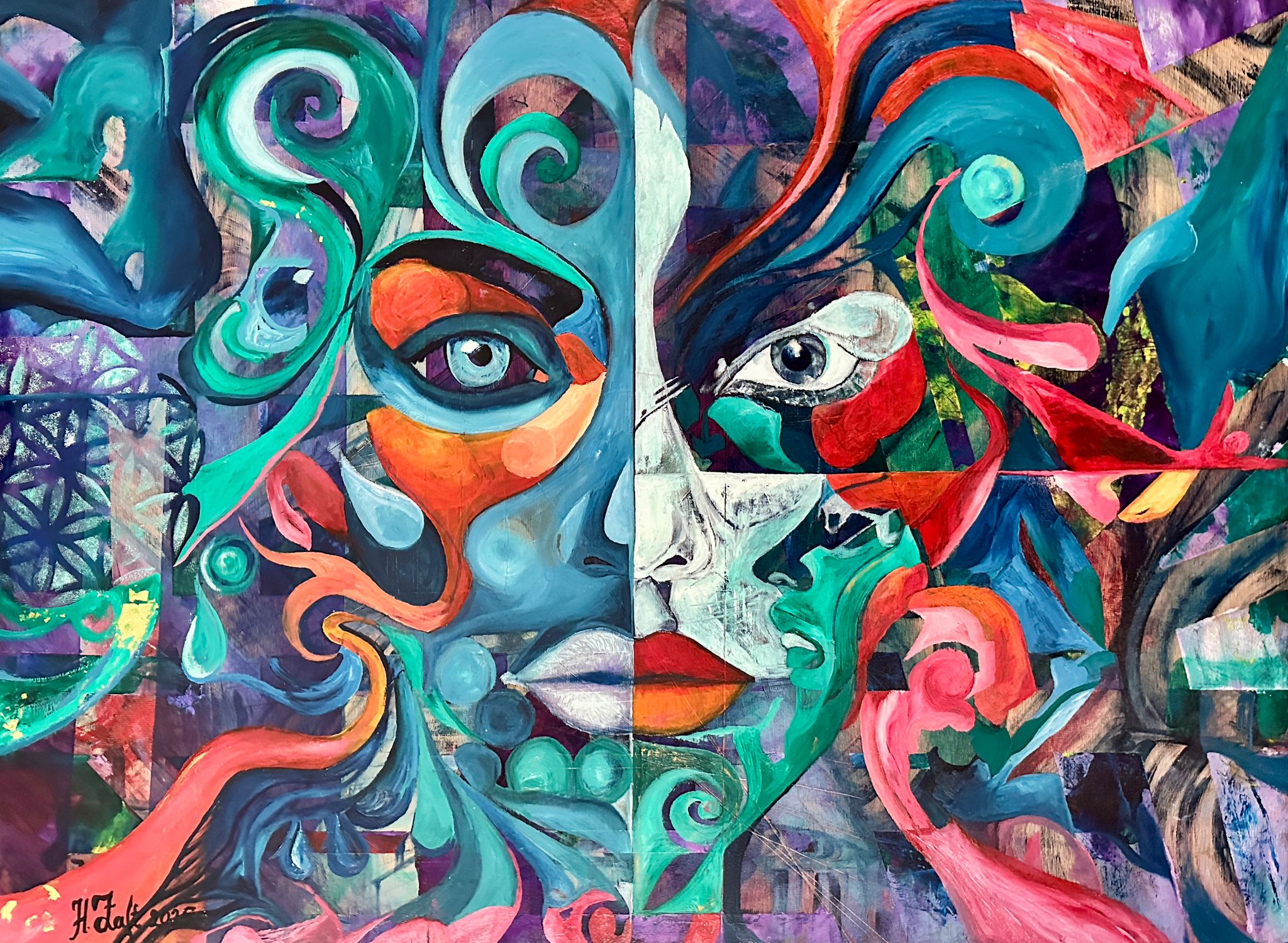The world of technology moves fast. What was groundbreaking yesterday can quickly fade into obscurity, overshadowed by the next big thing. In the early 2020s, Non-Fungible Tokens (NFTs) were the buzzword of the moment. Everyone — celebrities, artists, corporations, and everyday investors — wanted a piece of the digital gold rush.
Then, the hype bubble burst. Scandals, market corrections, and skepticism led many to believe that NFTs were just another passing trend. But are NFTs truly dead, or have they simply evolved into a more mature and sustainable digital asset class?
As we step into 2025, NFTs are proving they’re more than just digital art collectibles. They’re powering real-world applications, shaping industries, and redefining digital ownership. Let’s explore how NFTs have transformed and where they stand today.
The Rise, Fall, and Relevance of NFTs Today
The Shifting Tides of Digital Trends: From AI Dominance to NFT Resurgence
Right now, AI is at the center of global technological innovation. Every major industry — from healthcare to finance — is integrating artificial intelligence to optimize operations, automate tasks, and enhance decision-making. With all eyes on AI, you’d be forgiven for thinking NFTs had been forgotten.
But that’s far from the truth. While the NFT market has quieted down compared to its peak frenzy in 2021–2022, it has been quietly evolving, moving beyond speculative hype toward real-world utility. No longer just overpriced digital art, NFTs are proving valuable in industries like real estate, gaming, music, and intellectual property rights.
NFTs have matured into a serious digital asset class. According to recent reports, the global NFT market is projected to reach $231.98 billion by 2030, growing at a CAGR of over 33% from 2022. This sustained growth indicates that NFTs are far from obsolete.
Their place in the tech ecosystem has shifted from speculative investments to functional assets that provide verifiable ownership, authenticity, and monetization models across various industries. Today, NFTs are:
Enhancing supply chain transparency through blockchain verification
Revolutionizing real estate by enabling fractional property ownership
Creating sustainable digital economies in Web3 gaming and the metaverse
Empowering artists and content creators with royalty-based revenue
NFT development in 2025 remains a lucrative opportunity for creators, offering new ways to monetize digital assets and connect with global audiences. As the market matures, NFTs are evolving beyond collectibles into valuable, utility-driven tools, making now an ideal time to enter the space.
Beyond the Hype: Evaluating the Real-World Impact of NFTs
So, beyond the price fluctuations and news cycles, how are NFTs actually being used today?https://miro.medium.com/v2/resize:fit:1400/format:webp/1*bqGsg7kFmaabsu623Tb_Ug.png
1. Digital Art and Entertainment
NFTs still play a major role in the art and entertainment industries. Digital artists now tokenize their work, ensuring authenticity, preventing unauthorized reproduction, and securing perpetual royalties on secondary sales.
2. Real Estate and Property Ownership
NFTs are reshaping property transactions by enabling tokenized real estate ownership. Investors can now fractionally own properties, reducing entry barriers and increasing liquidity in the real estate market. Platforms like Propy and Roofstock are pioneering NFT-based property transactions.
3. Gaming and Virtual Economies
The gaming industry has fully embraced NFTs, allowing players to own, trade, and monetize in-game assets. Games like Decentraland, Axie Infinity, and The Sandbox have thriving NFT ecosystems, proving that digital ownership has real-world financial implications.
4. Intellectual Property and Licensing
NFTs are also being used for music licensing, patents, and intellectual property rights, ensuring transparency and fair compensation for creators. Kings of Leon’s NFT album release and Nike’s CryptoKicks are prime examples of how brands are leveraging NFT technology.
These practical applications prove that NFTs are far from dead — they’re just getting started.
The Meteoric Rise of NFTs: A Revolution in Digital Ownership
The Early 2020s NFT Boom: How the World Embraced Digital Collectibles?
Rewind to 2020, and NFTs were the hottest thing in tech. Digital artists were selling NFT collections for millions of dollars, and everyday investors were trying to flip JPEGs for profit. Some key moments from the NFT boom included:
Beeple’s digital artwork “Everydays: The First 5000 Days” selling for $69 million at Christie’s
Cryptopunks and Bored Ape Yacht Club (BAYC) becoming digital status symbols
NBA Top Shot revolutionizing sports collectibles with blockchain-powered highlights
Axie Infinity creating a play-to-earn gaming economy with NFTs
At the time, NFTs were seen as the future of digital ownership, attracting celebrities, artists, and investors eager to get in on the action.
Major Players Who Shaped the NFT Craze: From Celebrities to Corporations
As NFTs exploded, high-profile endorsements fueled the mania:
Celebrities: Snoop Dogg, Grimes, and Paris Hilton all launched successful NFT collections
Athletes: Tom Brady, Lionel Messi, and LeBron James entered the NFT space with digital collectibles
Corporations: Nike, Adidas, and Gucci integrated NFTs into their brand strategies
Tech Giants: Facebook (now Meta) and Twitter experimented with NFT profile pictures and integrations
Even traditional auction houses like Sotheby’s and Christie’s started selling NFT art, further validating the market.
The Promise of Decentralization: How NFTs Challenged Traditional Ownership Models
What made NFTs so revolutionary? Decentralization. Unlike traditional assets, which rely on third-party verification, NFTs introduced a new paradigm of digital ownership:
No intermediaries: Artists and creators could sell directly to buyers without relying on galleries or agencies
Immutable proof of ownership: Every NFT transaction is recorded on the blockchain, preventing forgery
Automated royalties: Smart contracts ensured that creators continued earning from secondary sales
The NFT Market Crash: Lessons from the Bubble Burst
The world of NFTs experienced a meteoric rise, captivating artists, investors, and tech enthusiasts alike. However, this rapid ascent was followed by a significant downturn, offering valuable lessons about market dynamics and investor behavior.
The Oversaturation of Low-Value Assets: Too Many Projects, Too Little Utility
At the height of the NFT craze, the market became flooded with a plethora of projects. From digital art to virtual real estate, the sheer volume was overwhelming. This oversaturation led to a dilution of quality, with many NFTs offering little to no real utility or value. Investors, initially driven by the fear of missing out, soon became wary as the market was inundated with low-quality assets. This glut contributed to the market’s instability and eventual decline.
Scandals, Scams, and Rug Pulls: The Dark Side of the NFT Frenzy
The rapid growth of the NFT market also attracted bad actors. Scams, fraudulent projects, and “rug pulls” became alarmingly common. Unscrupulous creators would launch projects, collect funds, and then disappear, leaving investors with worthless tokens. These incidents eroded trust and highlighted the need for due diligence and regulatory oversight in the burgeoning market.
Cryptocurrency Volatility and Market Corrections: NFTs Caught in the Storm
NFTs are intrinsically linked to the broader cryptocurrency ecosystem. As major cryptocurrencies like Bitcoin and Ethereum experienced volatility and market corrections, the NFT market felt the ripple effects. Declining crypto prices reduced purchasing power and investor confidence, leading to decreased demand for NFTs. This interconnectedness underscored the vulnerability of NFTs to broader market dynamics.
The Role of Economic Downturns: How Global Financial Shifts Affected NFT Adoption
Global economic factors, such as inflation, rising interest rates, and economic downturns, played a significant role in the NFT market’s trajectory. As economic uncertainty grew, investors became more risk-averse, pulling back from speculative assets like NFTs. This shift in investor sentiment led to reduced liquidity and a contraction in the NFT market.
Beyond the Collapse: The Quiet Evolution of NFTs
The initial frenzy surrounding NFTs may have subsided, but beneath the surface, a quiet revolution is unfolding. NFTs are transitioning from speculative assets to practical digital tools, finding applications across various industries.
Moving Past Speculative Trading: NFTs as Practical Digital Assets
Initially, NFTs were synonymous with digital art and collectibles, often fetching astronomical prices. However, the landscape has evolved, and NFTs now serve more practical purposes:
Digital Identities: NFTs are being utilized to create secure, verifiable digital identities, enhancing online authentication processes.
Event Ticketing: By issuing event tickets as NFTs, organizers can combat fraud and offer attendees unique, verifiable digital memorabilia.
Membership Programs: Exclusive memberships and loyalty programs are leveraging NFTs to provide unique benefits and rewards to holders.
NFTs have broken free from their initial confines and are making significant inroads into various sectors:
Real Estate: The tokenization of real estate properties allows for fractional ownership, making real estate investment more accessible. This approach not only democratizes access to high-value assets but also introduces liquidity into traditionally illiquid markets.
Gaming: In the gaming industry, NFTs enable players to own in-game assets — such as weapons, skins, and virtual real estate — that can be traded or sold across different platforms, creating new economic opportunities for gamers.
Intellectual Property Rights: NFTs are being used to represent ownership of intellectual property, allowing creators to monetize their work and maintain control over their digital assets.
Enterprise Adoption: How Businesses Are Integrating NFTs into Operations
Businesses are increasingly recognizing the potential of NFTs to enhance operations and engage customers:
Supply Chain Management: NFTs can track the provenance of products, ensuring authenticity and transparency in the supply chain.
Customer Engagement: Brands are using NFTs to offer exclusive digital collectibles, enhancing customer loyalty and creating new revenue streams.
Digital Product Passports: Luxury brands are implementing NFTs as digital product passports to verify authenticity and enhance customer trust.
How NFT Technology Is Shaping Decentralized Finance (DeFi) and Digital Identity?
NFTs are playing a pivotal role in the evolution of decentralized finance (DeFi) and digital identity:
DeFi Integration: NFTs are being used as collateral in DeFi platforms, enabling new financial products and services that are more accessible and efficient.
Digital Identity: By leveraging NFTs, individuals can have greater control over their digital identities, leading to more secure and personalized online experiences.
Challenges NFTs Must Overcome for a Sustainable Future
While NFTs have carved out a significant niche in the digital landscape, their journey toward mainstream acceptance and sustainability is fraught with challenges. Let’s delve into the key hurdles that NFTs must overcome to ensure a viable future.
Regulatory Uncertainty: Governments and Compliance Frameworks Catching Up
Navigating the murky waters of regulation has been a persistent issue for NFTs. In recent years, the U.S. Securities and Exchange Commission (SEC) has intensified its scrutiny of digital assets, including NFTs, to determine if they qualify as securities under federal law. This heightened attention has led to enforcement actions against certain NFT projects, creating a climate of uncertainty for creators and investors alike.
However, the regulatory landscape is evolving. In early 2025, the SEC announced a shift in its approach, indicating that certain digital assets, such as memecoins, would no longer be classified as securities. This move suggests a potential easing of regulatory pressures on similar digital assets, including NFTs.
Despite these developments, the lack of standardized global regulations continues to pose challenges. NFT creators and platforms must stay vigilant, ensuring compliance with varying regional laws to avoid legal pitfalls.
The Perception Problem: Overcoming Skepticism and Rebuilding Public Trust
Public perception can make or break emerging technologies. The NFT space has been marred by high-profile scams, art thefts, and speculative bubbles, leading to widespread skepticism. To counteract this, the industry needs to implement robust authenticity verification mechanisms and educate consumers about the value and utility of NFTs beyond mere speculation.
Environmental Concerns: Advancements in Energy-Efficient Blockchain Solutions
One of the most pressing criticisms of NFTs revolves around their environmental impact. Traditional blockchain networks, especially those using Proof-of-Work (PoW) consensus mechanisms, consume vast amounts of energy. For instance, Bitcoin’s annual energy consumption rivals that of entire countries, leading to significant greenhouse gas emissions.
In response, the blockchain community has been actively seeking greener alternatives. Ethereum, a major platform for NFTs, transitioned from PoW to Proof-of-Stake (PoS) in 2022, reducing its energy consumption by over 99.9%. This shift has set a precedent, encouraging other networks to adopt more sustainable practices.
Additionally, integrating renewable energy sources into mining operations and developing energy-efficient consensus algorithms are steps toward mitigating the environmental footprint of blockchain technologies.
Security and Fraud Prevention: Protecting Users from Digital Asset Vulnerabilities
The digital nature of NFTs makes them susceptible to various security threats, including hacking, fraud, and intellectual property disputes. To safeguard users and maintain the integrity of the NFT ecosystem, platforms must implement stringent security protocols. This includes multi-factor authentication, regular security audits, and educating users about potential risks.
Moreover, establishing clear legal frameworks to address intellectual property rights associated with NFTs is crucial. This ensures that creators’ rights are protected, and buyers can trust the authenticity and legitimacy of their purchases.
The Future of NFTs: A New Era of Innovation
As 2025 unfolds, NFTs are proving they are far from a fading trend. Instead of being just digital collectibles, they have evolved into valuable digital assets with real-world applications, corporate integrations, and financial utilities. With AI, the metaverse, and enterprise adoption shaping their future, NFTs are carving out a new space in the digital economy.
The Comeback of Utility-Driven NFTs: Real-World Applications That Matter
The days of NFTs being just overpriced digital images are long gone. Today, NFTs are used in numerous industries, making them practical digital assets rather than speculative investments.
Event Ticketing — Forget about counterfeit tickets or scalping issues. NFTs provide secure, verifiable entry passes for concerts, conferences, and sports events. They also allow event organizers to offer perks like lifetime access or VIP rewards.
Real Estate Transactions — Property ownership is being revolutionized by NFTs. Smart contracts enable instant, transparent, and fraud-proof real estate transactions. This also allows fractional ownership, making real estate more accessible to small investors.
Gaming and Virtual Assets — The gaming industry has fully embraced NFTs, allowing players to own, trade, and monetize in-game assets. This has given rise to entire economies where virtual land, weapons, and skins hold real-world value.
Intellectual Property Protection — Musicians, digital artists, and content creators use NFTs to prove ownership, track royalties, and prevent copyright theft. Instead of relying on centralized agencies, they now have full control over their digital rights.
NFTs are no longer just about hype. They are creating new revenue models, improving asset liquidity, and reshaping digital ownership in profound ways.
The Rising Demand for NFT Marketplaces — Why Starting One Is a Great Idea
With the renewed interest in NFTs and their increasing utility, NFT marketplaces are becoming one of the most lucrative opportunities in the blockchain space.
Why Build an NFT Marketplace in 2025?
Rising NFT Adoption — With more industries using NFTs for authentication, commerce, and ownership verification, the demand for secure and user-friendly marketplaces is skyrocketing.
Diverse Monetization Models — NFT marketplaces earn commission on every transaction, listing fees, and premium services, making them highly profitable.
Cross-Industry Applications — Unlike early NFT platforms that were art-centric, modern marketplaces can cater to real estate, gaming, luxury goods, and even tokenized stocks.
Corporate Partnerships — Major brands like Nike, Adidas, and Starbucks are launching NFTs. A well-structured marketplace can attract exclusive brand collaborations.
Key Features of a Successful NFT Marketplace
To stay competitive, a modern NFT marketplace should include:
✔ Multi-Chain Support — Allowing users to buy and sell NFTs across different blockchains increases accessibility.
✔ Fiat & Crypto Integration — Not everyone wants to buy NFTs with crypto. Offering credit card and bank payment options broadens the customer base.
✔ Gas-Free Transactions — High gas fees have been a major deterrent in the past. Using Layer-2 scaling solutions can make transactions more affordable.
✔ Community & Social Features — Exclusive creator drops, voting mechanisms, and NFT staking can drive engagement and customer retention.
For entrepreneurs looking to capitalize on Web3, launching an NFT marketplace in 2025 could be a game-changing business move.
Integration with AI and the Metaverse: The Next Frontier of Digital Assets
The synergy between NFTs, AI, and the metaverse is unlocking futuristic applications that were once considered impossible.




